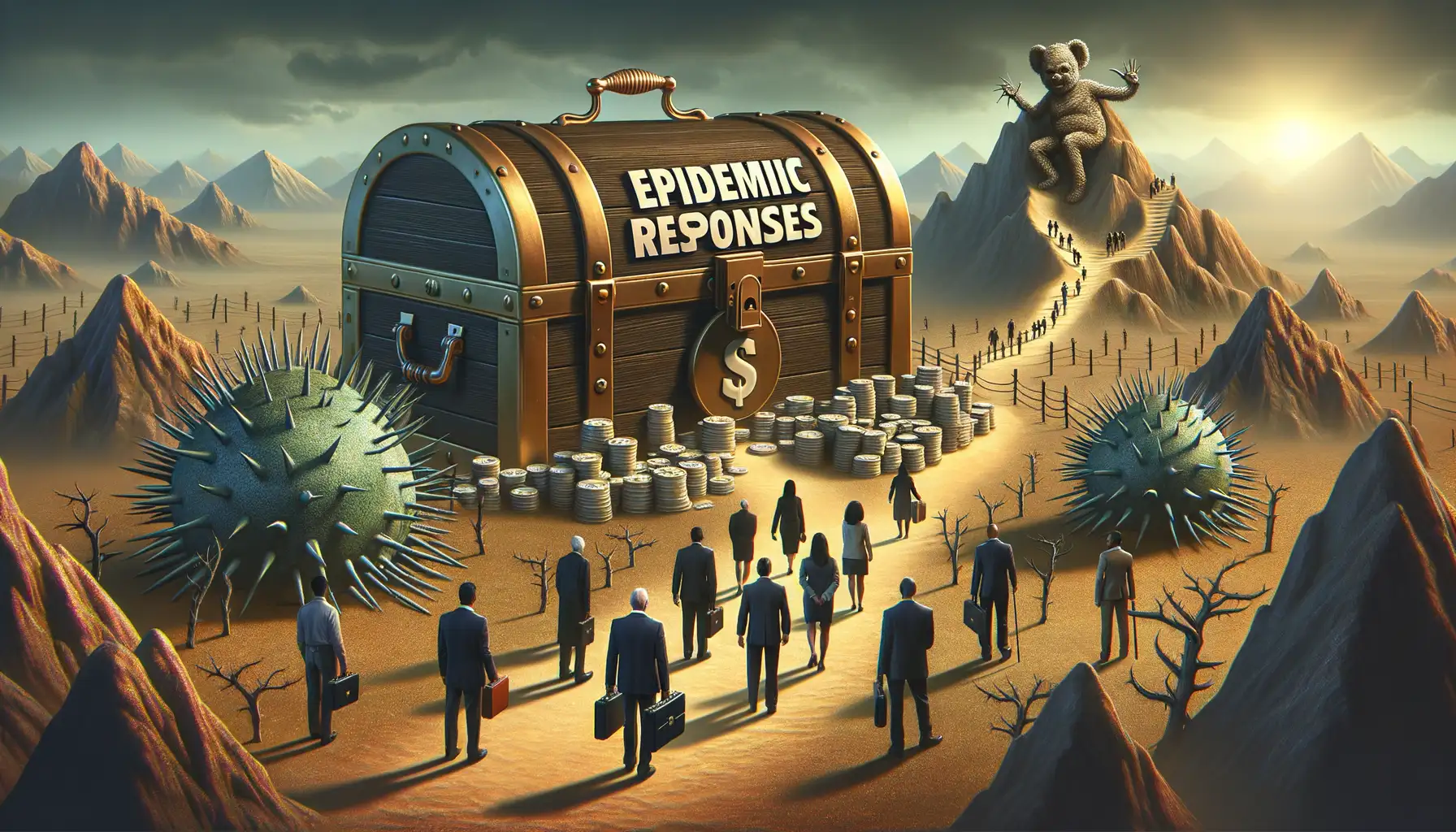Importance of Public Funding in Addressing Epidemics
Why Public Funding is the Backbone of Epidemic Response
Imagine trying to stop a wildfire with a garden hose. That’s what responding to epidemics feels like without enough money in the right places. Public funding acts as the powerful water cannon, extinguishing flames before they engulf entire communities. It fuels the systems that safeguard everyone—rich or poor, urban or rural—because viruses don’t check bank accounts before spreading.
Without robust funding, hospitals overflow, labs lack critical equipment, and vital vaccines stay stuck in research instead of reaching arms. Think about it: What would happen if local clinics couldn’t afford testing kits? How many lives hinge on early diagnosis and accessible treatment?
How Public Dollars Directly Protect Lives
Here’s the kicker—public funding doesn’t just respond to crises; it prevents them. Well-timed investments save millions of lives by creating:
- Emergency stockpiles of essential medicines and protective gear
- Global surveillance systems to track outbreaks before they spiral
- Accessible healthcare infrastructures for underserved populations
When governments prioritize epidemic responses, humanity stands a fighting chance. It transforms chaos into coordination, fear into readiness. That’s why every dollar counts—each one represents hope, protection, and resilience.
Key Challenges in Financing Epidemic Responses

When Resources Collide with Urgency
Imagine this: an outbreak spirals rapidly, hospitals overflow, and doctors race against the clock. Meanwhile, financing the response feels like trying to fill a leaking bucket. Why? Because epidemics don’t wait for boardroom approvals or lengthy budget negotiations.
One major hurdle is the unpredictability of outbreaks. Governments and organizations often scramble to redirect funds, but by the time the money arrives, it can be too little, too late. Then there’s the challenge of balancing budgets—should scarce funds go to vaccines, healthcare infrastructure, or community awareness campaigns? It’s a monstrous puzzle with no easy answer.
Another thorny issue? Inequities. Wealthy nations may pour billions into their own responses, while low-income countries are left relying on sporadic donor goodwill, creating a patchy global safety net that leaves millions vulnerable.
- Bureaucratic delays: Red tape slows access to essential funds.
- Insufficient reserves: Emergency funding pools are often underfunded or nonexistent.
- Public fatigue: Over time, the enthusiasm to contribute wanes, sapping resources.
While these financial blockades loom large, they’re not immovable mountains—only obstacles waiting to be overcome.
Case Studies: Effective Public Funding in Past Epidemics

How Bold Public Funding Stopped Epidemics in Their Tracks
When we think back to the dark days of past epidemics, it’s impossible to ignore one shining beacon of hope: swift and strategic public funding. Behind every successful containment effort lies a story of resources deployed at the speed of urgency, saving lives, economies, and futures. Let’s step into these moments and see exactly how money turned the tide.
Take the fight against the 2014 Ebola outbreak. The U.S. government allocated $2.4 billion to fund emergency medical teams, mobile labs, and vaccines. These funds didn’t just buy medical supplies—they bought time. Rapid-action mobile units allowed health workers to test suspected cases in hours instead of days. Imagine the difference that speed made in cutting transmission chains.
In South Korea’s 2015 MERS epidemic, officials funneled funds into building a centralized digital contact tracing system overnight. The result? An accurate case database that empowered authorities to isolate hotspots without locking down entire cities. It was financial bravery paired with tech innovation.
- Protective equipment for frontline workers—all funded through targeted programs.
- Mental health support after outbreaks—enabled by consistent budget allocations.
These stories remind us: public funding isn’t just numbers on a ledger. It’s the lifeline when humanity faces its fiercest battles.
Strategies for Enhancing Public Funding Mechanisms

Unleashing the True Potential of Public Funding
When it comes to epidemic response, public funding can feel like a tightly locked treasure chest. But what if we had the key? Unlocking this potential means thinking creatively and strategically—not just throwing money at the problem, but building sustainable systems that deliver real results.
Let’s face it: nobody wants their tax dollars getting lost in bureaucratic mazes. That’s where transparency shines. By implementing clear tracking mechanisms—think dashboards that show every dollar’s journey—we can ensure funds are used effectively. And what about engaging the public? Crowdsourcing platforms can amplify financial contributions while fostering a much-needed sense of ownership.
Smart Solutions for Financing Breakthroughs
To make funding mechanisms work overtime, it’s all about innovation. Here’s what to consider:
- Public-private partnerships (PPPs): Imagine vaccines developed faster because governments and corporations pool resources.
- Performance-based incentives: Tie funding to measurable goals—like cutting infection rates by 20%—to drive accountability.
- Emergency reserve funds: Think of it as the “rainy day fund” for pandemics, ready to activate when disaster strikes.
Ultimately, enhancing these mechanisms isn’t just strategy—it’s survival. When the next epidemic emerges, the stakes couldn’t be higher.
Impact of Public Funding on Health Outcomes and Preparedness

How Public Funds Shape Lives and Futures
Imagine a world where every community stands ready to face the storm of an epidemic. That readiness doesn’t appear out of thin air—it’s built brick by brick, often with the crucial support of public funding. From vaccines in schools to emergency hospital beds, the fingerprints of public investment are everywhere in our health systems.
When governments step up with strong financial backing, miracles happen. Take vaccination programs: that simple, routine jab in your arm often owes its existence to large-scale funding initiatives. Accessible medications? Same story. And let’s not overlook infrastructure—things like laboratories for outbreak predictions or training programs for front-line health workers. With effective funding, all these pieces come together like a finely-tuned orchestra.
- Faster detection: Early warning systems funded by public money often identify threats before they spiral out of control.
- Better access: Remote areas gain access to life-saving treatments thanks to targeted investments.
- Stronger communities: Preparedness fuels trust, resilience, and ultimately, hope.
When public funding flows where it’s needed most, it doesn’t just buy medicine or machines—it buys us time, safety, and the promise of a healthier tomorrow.
